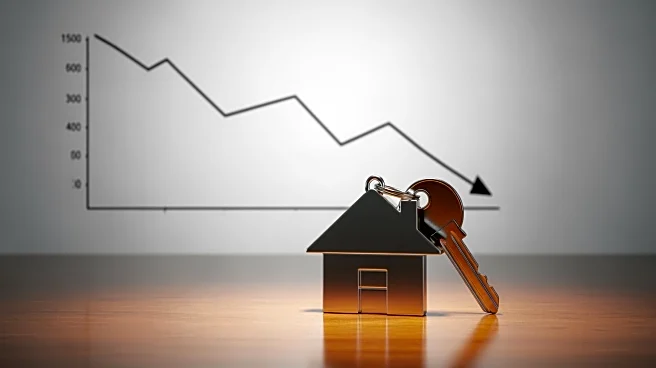What's Happening?
Recent data from Realtor.com indicates that the median home sale price in Nueces County rose slightly in August to $277,627, up from July's median of $275,356. This increase contrasts with a broader trend
across Texas, where the median sales price of single-family homes decreased by 1.6% from July to August. The data, sourced from real estate deeds, shows a 9.8% increase in recorded sales in Nueces County compared to August 2024, with 540 sales totaling $95.9 million. Despite the local increase, the overall Texas market saw a decline in the total value of recorded residential home sales, dropping 11.7% from $9.6 billion in July to $8.5 billion in August.
Why It's Important?
The slight increase in home prices in Nueces County suggests localized market resilience amidst a statewide downturn. This could indicate stronger demand or unique economic factors at play in the region. For potential buyers and sellers, understanding these local dynamics is crucial, as they may influence investment decisions and real estate strategies. The broader decline in Texas home prices and sales volume reflects potential challenges in the housing market, possibly influenced by economic conditions or shifts in buyer preferences. Stakeholders in the real estate industry, including agents and developers, may need to adjust their approaches to navigate these changes effectively.
What's Next?
As the Texas housing market continues to evolve, stakeholders will likely monitor economic indicators and regional trends to anticipate future shifts. Real estate professionals may focus on marketing strategies that highlight local advantages in areas like Nueces County. Additionally, policymakers and industry leaders might consider measures to stimulate the housing market, such as incentives for first-time buyers or adjustments in lending practices. The ongoing analysis of sales data will be essential for understanding the trajectory of home prices and sales volumes across the state.
Beyond the Headlines
The fluctuations in home prices and sales volumes could have broader implications for economic stability and community development in Texas. As housing affordability remains a critical issue, changes in the market may impact demographic trends, including migration patterns and urban development. The real estate sector's response to these challenges could influence long-term economic growth and social equity in the region.











